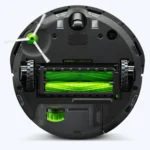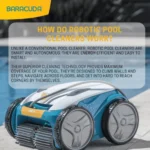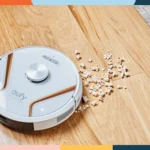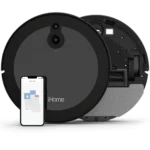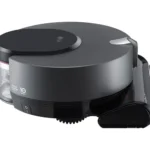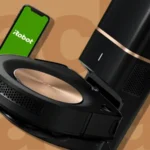The idea of having a robot vacuum cleaner that can efficiently navigate multiple floors and keep them free of dust and dirt is becoming increasingly popular. However, with so many options available in the market, it can be overwhelming to choose the right one for your needs. That’s why we have compiled a comprehensive guide to help you make an informed decision about the top features to look for in a multi-floor robot vacuum cleaner. From cleaning performance to connectivity and control options, we’ve got you covered. So, let’s dive in and explore the world of robot vacuums together.
Multi-Floor Navigation
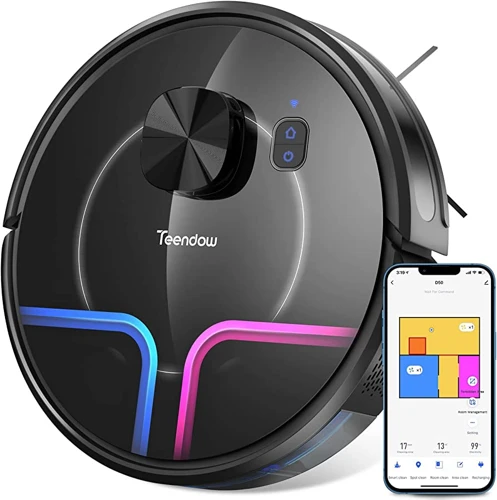
When it comes to cleaning multiple floors with a robot vacuum, you want to make sure it’s equipped with the right features. The ability to navigate around different levels is crucial for efficient cleaning. Multi-floor navigation allows robot vacuums to seamlessly move between different surfaces without user intervention. This is particularly useful for homes with several types of flooring, such as carpet, hardwood, and tile. With this feature, the robot vacuum can autonomously adjust its settings based on the floor it’s cleaning. Smart mapping and adaptive floor sensing are important aspects of multi-floor navigation that ensure the robot vacuum efficiently cleans all areas. In this section, we’ll explore these features and how they can benefit you.
Smart Mapping
When looking for a multi-floor robot vacuum cleaner, one of the key features to consider is smart mapping. This feature allows the robot to create a detailed and accurate map of your home, which it can then use to navigate in the most efficient manner possible. Here are some benefits of having a multi-floor robot vacuum with smart mapping:
- Efficient cleaning: With a smart mapping feature, your robot vacuum can detect the exact locations of your walls, furniture, and other obstacles. This means that it can clean your floors faster and more efficiently, without bumping into things or getting stuck.
- Personalized cleaning: Some multi-floor robot vacuums with smart mapping allow you to create virtual boundaries or no-go zones. This means that you can customize the cleaning pattern of your robot vacuum to avoid areas where you don’t want it to go.
- Multi-level cleaning: With a multi-floor robot vacuum that has smart mapping, you can easily move it between floors without worrying about it getting confused or lost. The map it creates on one floor can be saved and used when moved to another floor, ensuring that the robot vacuum knows where it is and where it needs to go.
Overall, smart mapping is an important feature to consider when purchasing a multi-floor robot vacuum. Not only does it make the cleaning process more efficient, but it also allows you to personalize the cleaning experience to fit your needs. If you’re unsure what robot vacuum to choose, check out our article featuring the best multi-floor robot vacuum for home to help you make an informed decision.
Adaptive Floor Sensing
Adaptive floor sensing is one of the key features to look for when choosing a multi-floor robot vacuum cleaner, as it allows the device to automatically adjust its cleaning settings based on the type of flooring it is currently cleaning. This is especially important if your home has a mix of different floor types, as it ensures that the vacuum delivers the best cleaning performance possible without damaging your floors.
One way that some robot vacuums achieve adaptive floor sensing is by using sensors to detect the type of surface they are on and adjust their suction power accordingly. For example, some models increase suction power when on a carpet and decrease it on hard floors to avoid damaging them. To help you choose the right vacuum with adaptive floor sensing, take a look at the table below for some popular models and their features.
| Vacuum Model | Sensors Used | Types of Surfaces Detected | Adjustment Types |
|---|---|---|---|
| iRobot Roomba i7+ | Optical and acoustic sensors | Carpet, hardwood, tile, and laminate | Automatic suction adjustment |
| Ecovacs Deebot N79S | Anti-collision and anti-drop sensors | Carpet, hardwood, tile, and low-pile carpet | Automatic suction adjustment |
| Shark ION Robot RV750 | Smart sensor navigation 2.0 | Carpet, hardwood, tile, and laminate | Automatic suction adjustment |
As you can see from the table, these three popular robot vacuum models use different types of sensors to detect various flooring types and adjust their cleaning settings accordingly. The iRobot Roomba i7+ uses optical and acoustic sensors, while the Ecovacs Deebot N79S has anti-collision and anti-drop sensors, and the Shark ION Robot RV750 uses smart sensor navigation 2.0.
Adaptive floor sensing is a crucial feature to look for if you want your multi-floor robot vacuum cleaner to efficiently clean your floors without causing any damage. Use this table to help you compare different models and find the one that best fits your needs. If you want to learn more about the benefits of multi-floor robot vacuums, check out our previous article on the topic.
Cleaning Performance
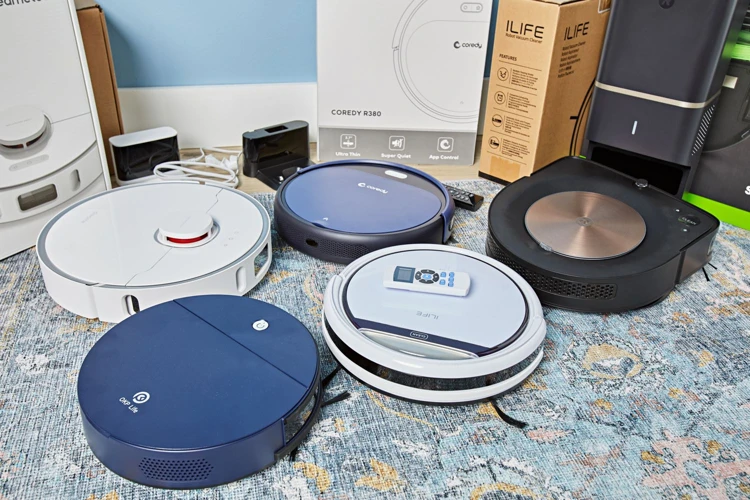
As important as the navigation features of a robot vacuum cleaner are its cleaning capabilities, after all, that’s what it’s supposed to do – clean your floors. When it comes to the cleaning performance of a multi-floor robot vacuum cleaner, there are several factors to consider to ensure that it delivers a thorough and efficient cleaning job. From suction power and brush rolls to filtration systems, let’s explore what you should look for in a multi-floor robot vacuum cleaner to get the best cleaning performance. If you’re interested in learning more about the benefits of multi-floor robot vacuums, check out our article on multi-floor robot vacuum adaptation.
Suction Power
Suction Power is one of the key factors to consider when choosing a multi-floor robot vacuum cleaner as it affects its cleaning performance. The suction power refers to the amount of air and debris that can be pulled into the robot vacuum cleaner’s dustbin. It is measured in Pascal (Pa) or AW (Air Watts) and the higher the value, the stronger the suction power.
A good suction power ensures that the robot vacuum cleaner can effectively pick up dirt, dust, and debris from both hard floors and carpets. For instance, carpets require more suction power to extract debris from their fibers, while hard floors demand moderate suction power. It is important to note that higher suction power directly translates to more power consumption, thus affecting the battery life of the robot vacuum cleaner.
When choosing a multi-floor robot vacuum cleaner, look for models with suction power ranging from 1000 to 2000 Pa or AW which provides decent suction power. For heavy-duty cleaning, consider models with suction power of up to 3000 Pa or AW.
Here is a list of some popular multi-floor robot vacuums with their respective suction power:
| Robot Vacuum | Suction Power |
|---|---|
| iRobot Roomba i7+ | 1700 Pa |
| Roborock S6 MaxV | 2500 Pa |
| Neato Botvac D7 | 2000 Pa |
| Ecovacs Deebot N8 Pro+ | 2600 Pa |
| Shark IQ Robot Self-Empty XL | 1500 Pa |
Make sure to choose a multi-floor robot vacuum cleaner with the right suction power for your cleaning needs to ensure an efficient cleaning process on all surfaces. For more information on the benefits and tips for using a multi-floor robot vacuum cleaner, check out our multi-floor robot vacuum benefits and care tips.
Brush Roll
A top-performing multi-floor robot vacuum cleaner should have a high-quality brush roll that can effectively clean different types of floors. The brush roll is the part of the robot vacuum cleaner that rotates and picks up dirt, dust, and debris from the floor. There are different types of brush rolls available on the market, each designed for specific surfaces and cleaning needs.
One type of brush roll is the agitator brush roll, which is ideal for cleaning carpets. It has stiff bristles that agitate the carpet fibers to loosen and remove dirt and hair. Another type is the brushless brush roll, which is best for hardwood floors and delicate surfaces. It uses soft rubber or silicone blades to sweep and pick up debris without scratching or damaging the floor.
In addition to the type of brush roll, it is important to consider the length and density of the bristles. Longer and denser bristles are better at picking up large and heavy debris, while shorter and sparser bristles are more effective at capturing fine dust and hair. Some brush rolls also have tangle-free technology that prevents hair and strings from wrapping around the brush roll, reducing maintenance and improving cleaning performance.
Here is a table summarizing the key factors to consider when choosing a multi-floor robot vacuum cleaner based on its brush roll:
| Brush Roll Type | Best For | Bristle Length and Density | Tangle-Free Technology |
|---|---|---|---|
| Agitator Brush Roll | Carpets | Long and dense | No |
| Brushless Brush Roll | Hardwood floors and delicate surfaces | Short and sparse | Yes |
To keep the brush roll in good condition and maintain the vacuum’s cleaning performance, it is important to regularly clean and replace it. Refer to our article on multi-floor robot vacuum care tips for more information on how to properly maintain your robot vacuum cleaner.
Filtration System
When it comes to the filtration system of a multi-floor robot vacuum cleaner, there are a few different options to consider. The filtration system is an essential feature as it captures dust, allergens, and other small particles from the air, improving the air quality in your home. Here are some top filtration options to look for:
- HEPA Filter: A High-Efficiency Particulate Air (HEPA) filter captures up to 99.97% of particles as small as 0.3 microns. It’s an ideal choice for those with allergies or respiratory issues. HEPA filters need periodic replacement, depending on usage.
- Anti-Allergy Filters: These filters are specifically designed to capture allergens from the air, making them an excellent choice for those who frequently suffer from allergies. They usually have a high-efficiency rating, filtering out particles larger than 1 micron. Like HEPA filters, they require routine replacement.
- Cyclonic Filtration: Cyclonic filtration is a technology that uses centrifugal force to separate dirt and debris from the air. This filtration method is effective at reducing the number of particles that end up back in the air, but it doesn’t capture the smallest particles like HEPA and anti-allergy filters.
- UV-C Light Filtration: UV-C light filtration is a newer technology that uses ultraviolet light to kill bacteria, viruses, and germs inside the robot vacuum cleaner. This filtration option is often used in conjunction with another type of filter.
When deciding on the filtration system for your multi-floor robot vacuum cleaner, it’s important to consider your particular needs. If you or someone in your home suffers from allergies or respiratory issues, you may want to opt for a HEPA or anti-allergy filter. If you’re concerned about bacteria that may be present in your home, a UV-C light filtration system may be a good choice. Whatever filtration system you choose, make sure to check the manufacturer’s recommendations for the proper upkeep and replacement schedule.
Battery Life and Charging
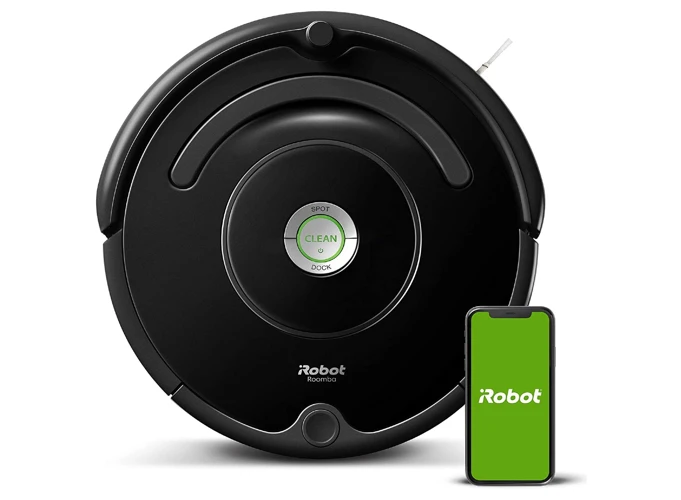
One of the most important aspects to consider when purchasing a multi-floor robot vacuum cleaner is the battery life and charging capabilities. The last thing you want is a vacuum that dies before it’s finished cleaning your home! The average battery life for a robot vacuum is around 90 minutes, so consider the size of your home and how long it will take the vacuum to clean it. If you have a larger home, you’ll want a vacuum with a longer battery life or one that can recharge and resume cleaning.
Look for a vacuum with a fast charging time, especially if you need to clean multiple floors in one day. Some robot vacuums can fully charge in just a few hours, while others may take up to 8 hours. Additionally, some vacuums have a quick charge feature that allows them to charge enough to finish a cleaning cycle in just 30 minutes or less.
When it comes to charging, check for a vacuum that can auto-dock and recharge on its own. This is especially useful if you have a busy schedule or tend to forget to charge the vacuum manually. The robot vacuum will return to its docking station when the battery is running low, and will charge up until it’s ready to continue the cleaning process.
Another important factor to consider is the battery life indicator. This lets you know when the battery is running low, so you can either manually charge the vacuum or let it return to its docking station. Some vacuums also have a resume feature, where they will pick up where they left off after recharging.
When choosing a multi-floor robot vacuum cleaner, pay close attention to the battery life, charging capabilities, and how the vacuum recharges. A fast charging time, auto-dock and recharge feature, and battery life indicator are all important factors to take into account. This will ensure that your cleaning process goes smoothly and efficiently.
Dustbin Capacity
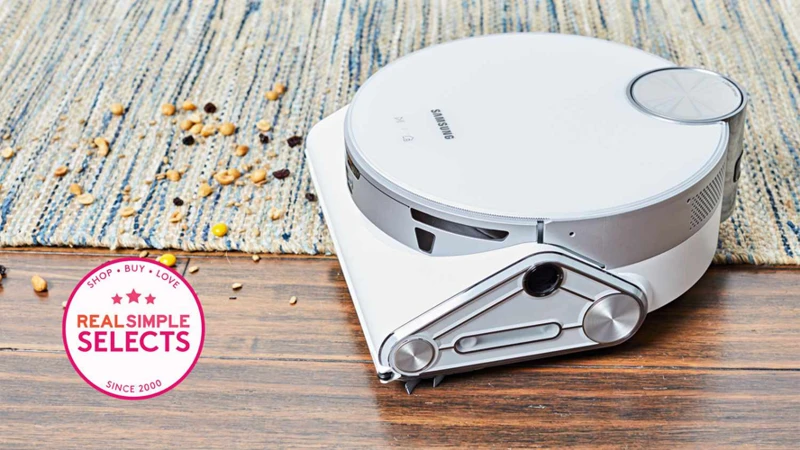
When it comes to multi-floor robot vacuum cleaners, the dustbin capacity is an important factor to consider. It determines how much debris and dirt the vacuum can hold before it needs to be emptied. A larger dustbin capacity can save you the hassle of frequent emptying and enhance the convenience of using the device.
The Ideal Dustbin Capacity
An ideal dustbin capacity for a multi-floor robot vacuum cleaner ranges from 0.3 to 0.7 liters. This capacity should be able to hold a considerable amount of debris and dirt without affecting the vacuum’s cleaning performance. However, if you have larger floors or areas with high traffic, you may want to consider a higher dustbin capacity to avoid frequent emptying.
Emptying the Dustbin
It is important to note that emptying the dustbin of a robot vacuum cleaner can be messy, especially if it’s too small. You want to ensure that the dustbin is easily accessible and can be removed and cleaned quickly without much hassle. Additionally, you might consider a vacuum cleaner with a self-emptying function to eliminate the need for manual emptying.
Auto-Empty Docking Station
Some robot vacuum cleaners come with an auto-empty docking station that not only saves you the hassle of manual emptying but also enables the vacuum to empty its dustbin automatically. This feature is ideal if you do not want to empty your vacuum frequently or if you have a busy lifestyle.
Compatibility with Different Floor Types
The dustbin capacity also affects the compatibility of the robot vacuum cleaner with different floor types. Devices with smaller dustbin capacities may struggle to clean large spaces or carpets as they might fill up quicker. As such, if you have carpets or large spaces, go for a vacuum with a higher dustbin capacity to ensure efficient cleaning.
The dustbin capacity is an important feature to consider when looking for a multi-floor robot vacuum cleaner. It determines how much debris and dirt the vacuum can hold before it needs to be emptied, making it a crucial factor in the device’s performance and convenience. Consider investing in a vacuum with an ideal dustbin capacity to enjoy hassle-free cleaning.
Size and Design
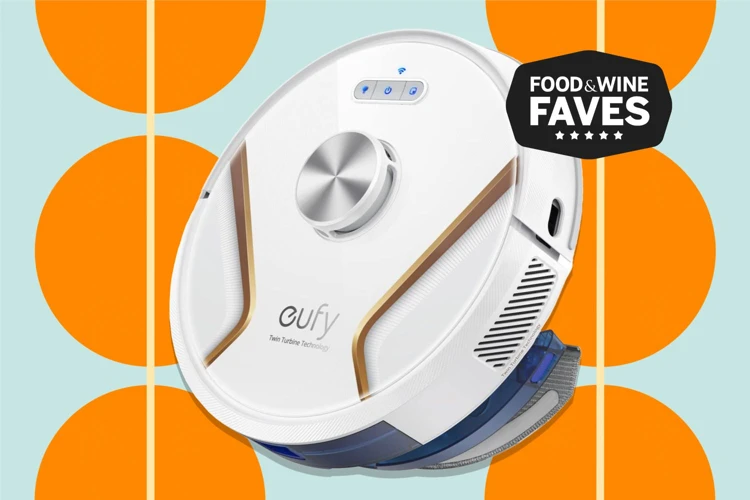
When it comes to a multi-floor robot vacuum cleaner, size and design are crucial elements to consider. The right size will determine the robot’s ability to maneuver around your furniture, while the design will ensure it can perform its task effectively. From the height and width to the shape and weight, every aspect of the robot’s size and design can impact the cleaning performance and user experience. In this section, we will delve into the various factors that you need to consider when picking the right size and design for your robot vacuum cleaner.
Height and Width
When it comes to buying a multi-floor robot vacuum cleaner, size and design are important considerations. One aspect of size that you will need to assess is the robot’s height and width. This will determine how easily the vacuum cleaner can access narrow or tight spaces, such as under furniture or between shelves.
Height: A robot vacuum cleaner’s height can vary greatly. Some models are designed to be slim and low-profile so they can easily slide under furniture or beds. Conversely, some models are taller and more cumbersome, which can make it difficult for them to navigate through tight areas.
Width: The width of a robot vacuum cleaner is also an important consideration, especially if you have tight corners or narrow spaces in your home. Bigger models may have wider cleaning heads that can cover more ground in a single pass, but in certain cases, smaller cleaning heads may be more effective at getting into tight spaces.
To give you an idea of the different sizes and dimensions of robot vacuum cleaners on the market, we’ve created a table below:
| Brand/Model | Height (inches) | Width (inches) |
|---|---|---|
| iRobot Roomba 980 | 3.6 | 13.8 |
| Eufy RoboVac 11S | 2.85 | 12.8 |
| Neato Botvac D7 | 3.9 | 13.2 |
| Shark Ion R85 | 3.5 | 12.8 |
| Ecovacs Deebot N79S | 3.1 | 13.0 |
As you can see, robot vacuums come in various shapes and sizes, each with their own set of pros and cons. When selecting a robot vacuum cleaner, consider the height and width of the model to ensure it will fit under and around your furniture without getting stuck or causing damage. By taking the time to research and compare different models, you’ll be sure to find a robot vacuum that is perfect for your home.
Shape and Weight
Choosing the right shape and weight for a multi-floor robot vacuum cleaner is crucially important for several reasons. Firstly, it determines how well the device can navigate through tight spaces and around obstacles. Secondly, it influences the ease of storage and portability of the robot vacuum cleaner.
Shape: Most robot vacuum cleaners are designed to be circular, which allows them to move more easily around corners and tight spaces. However, there are newer models available that come in a ‘D’ shape to enable more efficient cleaning and better edge-to-edge cleaning along walls and baseboards. The shape of the vacuum cleaner is a matter of preference, but if you have a lot of furniture, go for the circular one as they can manoeuvre better than the D-shaped models.
Weight: The weight of a robot vacuum cleaner plays a vital role in determining how well it can transition between floors. HEPA filtration systems that create strong suction power and more advanced features can add to the weight of the device. Lightweight robot vacuum cleaners are more manoeuvrable, easier to carry, and require less storage space. Use a table like this to compare weight and shape for multi-floor robot vacuum cleaners:
| Brand | Shape | Weight (lbs) |
|——–|——–|————–|
| iRobot | Circular | 5.5 |
| Eufy | Circular | 6.7 |
| Roborock | D-Shape | 7.7 |
| Shark | Circular | 8.7 |
| Samsung | D-Shape | 9.5 |
As you can see, there is a difference in weight between circular and D-shaped models. If you prefer a lightweight robot vacuum cleaner, go for the iRobot Roomba or Eufy Robovac. However, if you want a better edge-to-edge cleaning along walls and baseboards, the Roborock and Samsung options will be good as they are D-shaped. Always consider what will be more convenient for you when it comes to the shape and weight of a robot vacuum cleaner.
Noise Level
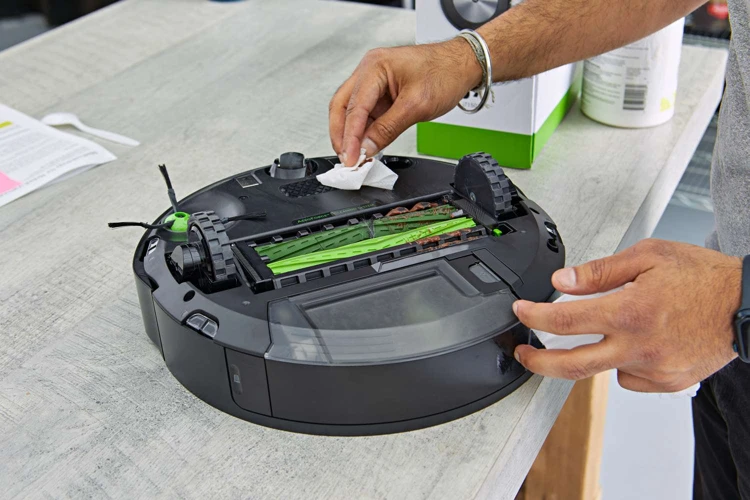
When it comes to choosing a multi-floor robot vacuum, the noise level is a critical consideration that should not be ignored. Nobody wants a cleaning appliance that sounds like a heavy-duty construction site. Not only can it be a distraction or annoyance for you, but it can also scare your pets and disrupt your daily activities. It is crucial to look for a robot vacuum cleaner with a quiet motor that operates without disturbing the peace of your home.
Low Noise Operation
The majority of the latest models of robot vacuums are built with a low noise feature that reduces the noise level to a minimum. These models are praised for their ability to clean the floors almost silently. If you want to know the exact decibel level of your robot vacuum, check the manufacturer’s website or product manual for the noise level specification. Generally, a robot vacuum with a noise level anything below 70db is considered quiet and would operate without disrupting your peace.
Noise Reduction Engineering
Apart from having a low noise motor, some robot vacuums are built with cutting-edge noise reduction engineering. By using advanced sound insulation materials and optimizing air flow, these robot vacuums create minimal noise pollution while cleaning your home’s floors thoroughly. Some models come equipped with soft cushion bumpers that absorb the noise created when the vacuum comes into contact with various furniture pieces. This reduces the amount of noise and minimizes the risk of damage to your walls or furniture.
Quiet Mode
Several multi-floor robot vacuum cleaners have a “quiet mode” option, which reduces the noise level even further. This feature allows you to run the robot vacuum without any noise disruption, even during the day. If you work from home or have young children, this feature might be a life-saver, as it will not disturb your work or your toddler’s nap time.
Noise level is an essential factor to consider when purchasing a robot vacuum cleaner for your house. Look for models that have different features designed to reduce noise, such as a low noise motor and noise cancellation engineering. Additionally, you can check for products with a quiet mode feature that can make the device almost soundless while cleaning. With the right robot vacuum cleaner, you can keep your home clean without any added noise pollution.
Connectivity and Control
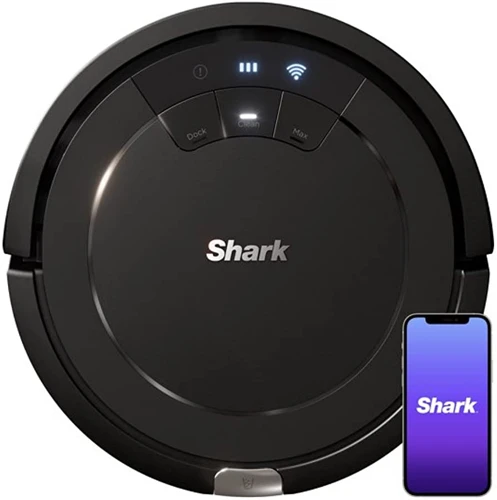
When it comes to multi-floor robot vacuum cleaners, one of the most significant advancements in recent years has been the integration of connectivity and control features. These features allow users to control their robot vacuums through a variety of methods, from mobile apps to voice commands and remote controls. The ability to control and monitor the vacuum’s cleaning progress remotely has made these devices even more convenient and efficient. Let’s take a closer look at some of the connectivity and control features that are essential to consider when shopping for a multi-floor robot vacuum cleaner.
Mobile App
Having a robot vacuum with a mobile app is a great advantage, as it allows you to control the device remotely and gives you access to additional features. Here are some of the key things to look for in a robot vacuum mobile app:
- Compatibility: Make sure the robot vacuum’s mobile app is compatible with your smartphone or tablet’s operating system. Most apps work with both Android and iOS, but it’s always best to double-check.
- Remote Control: The mobile app should give you full control of the robot vacuum, allowing you to start, stop, and pause cleaning sessions, as well as directing the robot to specific rooms or areas.
- Scheduling: The ability to schedule cleaning sessions is a key feature of any robot vacuum mobile app. Look for an app that allows you to set up a weekly or daily schedule, as well as specifying the areas or rooms that need to be cleaned.
- Status Notifications: A good robot vacuum mobile app will send you notifications when the device has finished cleaning or if there are any issues or errors that need to be addressed.
- Customization: Some robot vacuum mobile apps allow you to customize cleaning settings, such as suction power or cleaning modes, to better suit your cleaning needs.
- Integration: If you have other smart home devices, look for a robot vacuum mobile app that can integrate with them, allowing you to control everything from one app.
Having a mobile app that is user-friendly and offers a variety of features will make owning a robot vacuum much more convenient and efficient.
Voice Control
Voice control is becoming more prevalent in the world of technology and home appliances. Many multi-floor robot vacuum cleaners offer voice control as a way to increase ease of use and convenience. Here are some key benefits and considerations to keep in mind when looking for a robot vacuum with voice control:
- Hands-free operation: One of the main benefits of voice control is the ability to operate the robot vacuum cleaner without physically interacting with it. Simply speaking a command can start, stop, or direct the vacuum to a different location, making it a great option for those with mobility issues or limited dexterity.
- Compatible devices: When choosing a robot vacuum with voice control, be sure to check which devices are compatible. Most devices will work with popular voice assistants like Amazon Alexa or Google Assistant, but it’s always best to double-check before making a purchase.
- Commands supported: Different robot vacuums may support a variety of voice commands. Some models may only allow for basic commands like starting and stopping, while others may offer more complex options like scheduling or spot cleaning. Make sure to research which commands are supported before making a purchase.
- Privacy concerns: With any device that is voice controlled, there may be privacy concerns. Be sure to read up on the privacy policies and security features of any robot vacuum cleaner you’re considering, and always keep your personal information safe.
Voice control can be a valuable feature for those looking to make their cleaning routine more efficient and hands-free. However, it’s important to weigh the pros and cons and choose a robot vacuum that aligns with your personal preferences and needs.
Remote Control
Remote control is a feature that is highly demanded by many users, and it comes in handy in several ways. Here are some of the perks of having a remote control for your multi-floor robot vacuum cleaner:
- Convenience: Controlling your robot vacuum cleaner from a remote location is incredibly convenient. You can sit down and relax while the robot cleaner does its work. You don’t have to worry about chasing after it or constantly adjusting its settings.
- Increased accessibility: With a remote control, you can easily adjust the robot vacuum cleaner’s settings without having to bend down and reach for the buttons. This feature comes in handy for those with mobility issues or disabilities that prevent them from bending down quickly.
- Precision: A remote control allows for greater precision when navigating around obstacles or cleaning a particular area. You can guide the robot vacuum cleaner to a specific spot to clean or avoid furniture or other objects that may damage it.
- Efficiency: A remote control also improves the efficiency of the cleaning process. You can direct the robot cleaner to focus on specific areas that require more attention, such as high-traffic areas, spillages or areas with pet hair.
- Customization: Some remote controls have additional features that allow for more customization, such as scheduling cleaning times for specific rooms, selecting specific cleaning modes, adjusting the suction power or brush roll, and more. Such possibilities empower you to make the most of your robot cleaner’s capabilities.
Remember that while a remote control is a convenient feature, it’s important not to rely on it too heavily. Always ensure that your robot vacuum cleaner has the right settings and programming for your home’s layout to avoid accidents and achieve optimal results.
Obstacle Detection and Avoidance
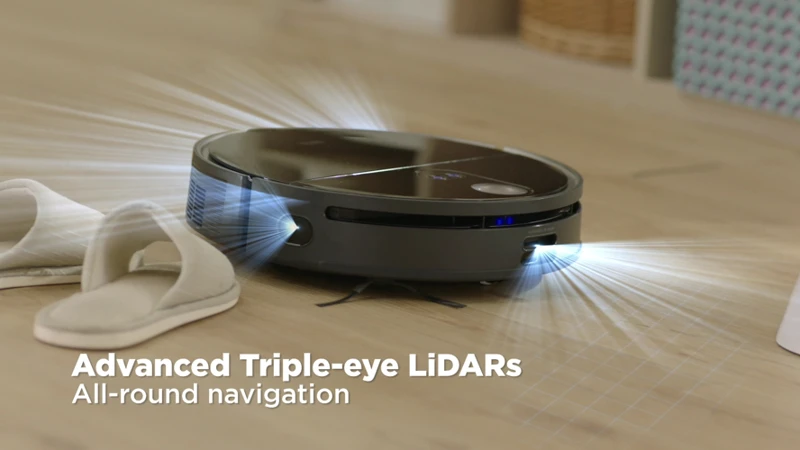
One of the most impressive features to consider when looking for a multi-floor robot vacuum cleaner is its ability to navigate around obstacles and avoid collisions. This feature ensures that you won’t have to worry about your vacuum getting stuck or causing damage to your furniture and home decor.
Laser Mapping Technology
Many high-end multi-floor robot vacuum cleaners come with built-in laser mapping technology. This feature allows the vacuum to create a detailed map of your home, enabling it to navigate around obstacles with ease. Laser mapping technology is incredibly accurate and can scan a room within seconds, providing the robot vacuum with the information it needs to create the most efficient cleaning path.
Bumper and Sensor Detection
Another obstacle detection and avoidance feature that many robot vacuums have is bumper and sensor detection. This feature helps the vacuum detect objects in its path and avoid them. Bumper detection systems use physical contact to detect objects, while sensor detection relies on infrared sensors to detect and avoid obstacles. Combining these two technologies can help ensure that your robot vacuum is as safe and effective as possible while cleaning.
Climbing Ability
Some robot vacuums also have the ability to climb onto low-pile carpets and rugs. This feature ensures that the vacuum can reach every corner of your home, no matter the surface. If your home has multiple types of flooring, it’s essential to find a vacuum that can navigate between them and climb on area rugs without getting stuck.
Anti-Fall Sensors
In addition to obstacle detection, many robot vacuums come with anti-fall sensors. These sensors prevent the vacuum from falling down stairs, ledges, or uneven surfaces. Anti-fall technology is especially useful if you live in a multi-level home and want to ensure that your vacuum can clean safely and effectively on each floor.
Conclusion
Ultimately, the obstacle detection and avoidance features of a multi-floor robot vacuum cleaner are critical for ensuring that your home is not only clean but also safe. From laser mapping technology to anti-fall sensors, there are many ways that robot vacuums can navigate around obstacles and avoid collisions. Be sure to consider these features when shopping for a multi-floor robot vacuum cleaner that meets your needs and lifestyle.
Boundary Marking and Virtual Walls
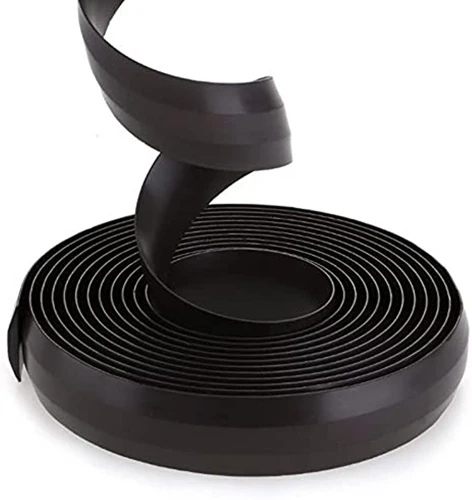
When you’re considering a multi-floor robot vacuum cleaner, one important feature to keep in mind is the ability to create boundaries or virtual walls. This feature allows you to set limits for where your robot vacuum can and cannot go.
Boundary marking is a feature that lets you physically mark off areas that you don’t want the robot vacuum cleaner to enter. Some robot vacuum cleaners come with adhesive tape or magnetic strips that can be placed around the perimeter of the room or certain areas like around the pet’s food bowl. The robot vacuum will recognize the boundary markers and avoid these areas.
Another option that saves you from placing physical markers is virtual walls. Virtual walls are digital barriers the vacuum cleaner won’t cross; they determine the exact points beyond which the robot vacuum isn’t allowed to go. You can use a remote control or a mobile app to create these walls. They are great for keeping the robot vacuum cleaner out of certain areas like a home office, a kids’ playroom, or a room with delicate furniture.
Both boundary markers and virtual walls help to keep the robot vacuum cleaners focused on the areas that really need cleaning while avoiding obstacles and making sure they don’t damage anything. These features can save you time in the long run, as you don’t have to worry about your robot vacuum cleaner getting stuck under the bed or knocking over prized possessions when you’re not at home.
When selecting a robot vacuum cleaner, always check that it offers boundary marking or virtual walls to ensure you have more control over where it cleans. This will give you a greater sense of security and satisfaction when it comes to cleaning your home.
Extra Features to Consider
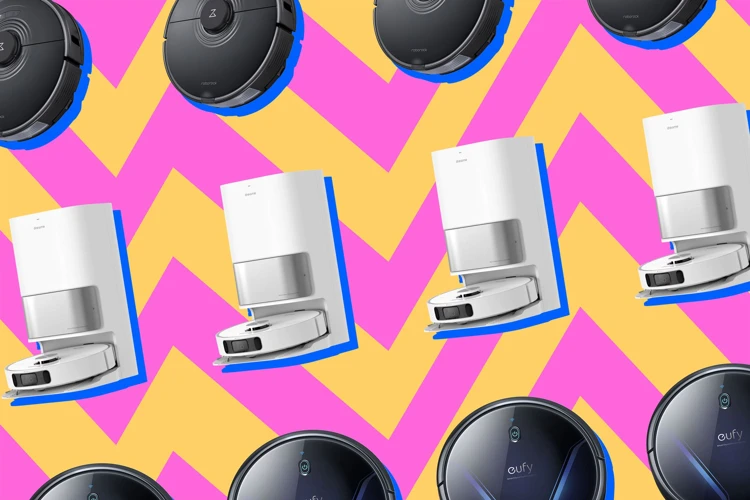
As technology continues to advance, robot vacuum cleaners are becoming more feature-packed and versatile. While the essential features have been covered in the previous sections, there are still several additional functionalities you may want to consider when purchasing a multi-floor robot vacuum cleaner. These extra features can improve the cleaning efficiency, convenience, and overall experience of using the device. Keep reading to explore these options and choose the ones that are most relevant to your needs.
Auto-Empty Docking Station
One of the latest features in modern robot vacuum cleaners is the auto-empty docking station. This feature has significantly simplified the cleaning process, making it almost hands-free. With this feature, the robot vacuum can empty its own dustbin and recharge itself automatically.
Here are some of the benefits of having an auto-empty docking station:
- Convenience: The auto-empty docking station saves you the hassle of manually emptying the dustbin. It makes your cleaning routines more efficient as the robot vacuum can work continuously for longer periods without needing you to intervene.
- Bigger Dustbin Capacity: The auto-empty docking station also allows for a bigger dustbin, since the robot vacuum can automatically empty the dustbin multiple times without requiring you to make any physical effort.
- Advanced Technology: The auto-empty docking station uses advanced technology to get rid of the dirt and debris collected by the robot vacuum. Some docking stations use a vacuum suction mechanism to empty the dustbin, while others use a disposable bag. Both options are efficient, safe, and hygienic.
- Peace of Mind: Finally, the auto-empty docking station gives you peace of mind since you don’t have to worry about emptying the dustbin or the robot vacuum running out of battery. You can set your cleaning schedule and rest assured knowing that your floors are being cleaned efficiently and effectively.
The auto-empty docking station is a valuable feature that significantly improves the functionality of robot vacuum cleaners. If you are looking for a hands-free cleaning experience, then you should consider investing in a robot vacuum with an auto-empty docking station.
Spot Cleaning
Spot cleaning is a feature that can be incredibly useful for keeping your floors clean without having to perform a full cleaning cycle. Spot cleaning is typically achieved through the use of the robot vacuum cleaner’s mobile app or remote control function. Here are some key points to consider when shopping for a multi-floor robot vacuum cleaner with spot cleaning functionality:
- Spot Cleaning Pattern: Look for a robot vacuum cleaner that has an effective spot cleaning pattern. Some robots follow a spiral or concentric circle pattern, while others use a straight line pattern. Consider which pattern is more effective for the area you want to clean.
- Spot Cleaning Time: Consider the length of time the robot will take to complete a spot cleaning cycle. The longer the robot runs, the more thorough the cleaning will be, but it may take longer to recharge.
- Spot Cleaning Size: Some robot vacuum cleaners offer spot cleaning functionality for specific messes or areas, such as a spill on the carpet or under the dining table. Make sure that the robot’s spot cleaning mode can handle the size of the mess you need to clean.
- Spot Cleaning Power: Look for a robot vacuum cleaner that has high suction power or a powerful brush roll for spot cleaning. This will ensure that the robot can effectively remove dirt, dust, and debris from the area.
- Spot Cleaning Automation: Some robot vacuum cleaners will automatically initiate spot cleaning when they detect a mess or dirty area. Look for a robot vacuum cleaner with this feature if you want a convenient and hands-free cleaning experience.
Spot cleaning functionality is a great feature to have on a multi-floor robot vacuum cleaner. It allows you to quickly and easily clean up messes before they become a bigger problem. Make sure the robot vacuum cleaner you choose has spot cleaning capabilities that meet your specific cleaning needs.
Mopping Functionality
One of the most desirable features in a multi-floor robot vacuum cleaner is mopping functionality. Not only does it vacuum your floors, but it also has a separate tank for a mop attachment that wipes and cleans as it moves around your home.
Here are some key benefits of having a robot vacuum cleaner with mopping functionality:
- Cleaner Floors: Traditional vacuum cleaners miss out on spots, but mopping functionality ensures every nook and cranny is cleaned.
- Less Effort: Instead of manually mopping your floors, a robot vacuum cleaner with mopping functionality does it all for you, saving you time and effort.
- Multiple Floor Types: The mopping function of the robot vacuum cleaner can be used on various floor types such as wooden floors, tiles, granite, and marble floors.
- Automated Cleaning: You can schedule your vacuum to clean your floors and mop them as well, even when you are not home.
- Improved Air Quality: Apart from cleaning floors, mopping functionality also helps in getting rid of airborne allergens, resulting in improved air quality.
When choosing a robot vacuum cleaner with mopping functionality, keep in mind the type of mop attachment that comes with it. Some robot vacuum cleaners come with a combination of brushing and mopping, while others come with a separate tank for the mop attachment.
Another consideration to keep in mind is the size of the tank for the mop attachment. You don’t want to be stopping frequently to refill the tank while cleaning your floors.
Lastly, it’s essential to know whether the robot vacuum cleaner has a feature to manage the amount of water used during the mopping process. You don’t want to end up with a wet floor after the robot finishes cleaning, and this feature can ensure that the right amount of water is used for mopping.
A robot vacuum cleaner with mopping functionality is an excellent addition to any home. It saves time and energy, and will keep your floors clean and free from dirt and allergens.
Price and Warranty
When it comes to purchasing a multi-floor robot vacuum cleaner, price is a crucial factor to consider. Going for the cheapest option may not always be the best idea as it may lack features or may not perform the way you desire. However, that doesn’t mean you have to break the bank.
Price: Multi-floor robot vacuum cleaners range widely in price, from just under $200 to over $1,000. The more advanced models with more features will naturally cost more. Determine a budget beforehand and compare the features of different models in that price range to see which one fits your needs best.
Don’t forget to consider any additional expenses that may come with the robot vacuum cleaner. Will you need to purchase any extra filters or brushes? Is there a service fee for maintenance or repair? These expenses can add up over time and affect the overall cost of owning a robot vacuum cleaner.
Warranty: Before making a purchase, check the warranty that comes with the model. The length and quality of the warranty can give you an idea of the manufacturer’s confidence in their product. A longer and more comprehensive warranty can also provide peace of mind in case of any defects or malfunctions.
Make sure to read the warranty carefully and understand what’s covered and what’s not. Some warranties only cover certain types of issues or require specific maintenance steps to be followed. If you have any questions, don’t hesitate to contact the manufacturer or retailer for clarification.
Ultimately, finding a multi-floor robot vacuum cleaner with the right features and at the right price point that fits your needs is key. By considering price and warranty alongside other features, you can make an informed and satisfying purchase.
Conclusion
As we come to the end of our detailed guide on the top features to look for in a multi-floor robot vacuum cleaner, it’s clear that there are a lot of excellent options available on the market today. By prioritizing the factors that matter most to you, such as cleaning performance, navigation, connectivity, and ease of use, you can narrow down your search and find the robot vacuum that will best suit your unique needs.
When it comes to multi-floor navigation, smart mapping and adaptive floor sensing are two features that can vastly improve the efficiency and accuracy of your robot vacuum cleaner. By developing an understanding of your home’s layout and adapting to changes in flooring, your robot vacuum can clean more thoroughly and efficiently than ever before.
For optimal cleaning performance, it’s important to consider factors like suction power, brush roll design, and filtration system quality. High suction power can make short work of even the most stubborn dirt and debris, while an effective brush roll can loosen and lift dirt and pet hair from carpeting and upholstery. A high-quality filtration system ensures that the air in your home remains clean and healthy, even as your robot vacuum sucks up dirt and dust from your floors.
Battery life and charging are also important factors to consider – after all, you don’t want your robot vacuum running out of steam mid-clean. Look for models with long battery life and efficient charging times to ensure that your robot vacuum can keep up with your household’s cleaning needs.
Size and design may also be an important consideration, especially if you have limited storage space or need a robot vacuum that can fit under low-clearance furniture. Additionally, noise level can be an important factor, especially if you will be running your robot vacuum while you and your family are at home.
Connectivity and control can make your robot vacuum even more convenient to use. Mobile apps, voice control, and remote control options all allow you to start and stop cleaning cycles, adjust settings, and monitor your robot vacuum’s status from anywhere in your home.
Finally, when considering extra features like auto-empty docking stations, spot cleaning, or mopping functionality, it’s important to weigh the benefits against the added cost. And of course, price and warranty are always important considerations when making a major purchase like a robot vacuum cleaner.
Overall, the top features to look for in a multi-floor robot vacuum cleaner will depend on your unique needs and preferences. By carefully considering the factors outlined in this guide, you can make an informed decision that will help you keep your home clean and healthy with minimal effort.
Frequently Asked Questions
What is the benefit of multi-floor navigation in a robot vacuum cleaner?
A multi-floor navigation feature can help the robot vacuum cleaner to move seamlessly from one level to another without getting lost, stuck, or falling off an edge. This ensures efficient and effective cleaning and saves the user time and effort.
How does smart mapping help a robot vacuum cleaner?
Smart mapping is a feature that allows a robot vacuum cleaner to create a detailed map of the cleaning area and use it to plan efficient cleaning routes. This helps the device to avoid missing areas or repeating sections it has already cleaned, leading to better cleaning results.
What is adaptive floor sensing and why is it important?
Adaptive floor sensing is a feature that allows a robot vacuum cleaner to sense the type of flooring it is cleaning and adjust its cleaning settings accordingly. This can help preserve battery life, prolong the life of the device, and ensure effective cleaning on different surfaces such as carpets, hardwood, or tiles.
Why is suction power important in a robot vacuum cleaner?
Suction power determines how well a robot vacuum cleaner can pick up dirt, dust, and debris from carpets or floors. A higher suction power can help the device to handle tough cleaning tasks and leave the floors spotless.
What is the role of a brush roll in a robot vacuum cleaner?
A brush roll helps to agitate and loosen up dirt and debris from carpets, making it easier for the robot vacuum cleaner to pick them up. It also helps to give carpets a deeper cleaning and prevent tangling or matting of fibers.
Why is a filtration system important in a robot vacuum cleaner?
A quality filtration system can trap dust, allergens, and other airborne particles, preventing them from escaping into the air and reducing the risk of respiratory or allergy-related issues. It also helps to keep the robot vacuum cleaner running smoothly and effectively for longer.
How long should the battery last in a robot vacuum cleaner?
The battery life of a robot vacuum cleaner can vary, but ideally, it should last for at least an hour or more to ensure efficient and thorough cleaning. Some high-end models can run for several hours on a single charge.
What is the importance of dustbin capacity?
A larger dustbin capacity allows the robot vacuum cleaner to collect more dirt, dust, and debris without the need for frequent emptying. This can save users time and effort and ensure that the device does not need constant maintenance.
What is the maximum noise level for a robot vacuum cleaner?
Robot vacuum cleaners vary in noise level, but ideally, they should operate at 65 decibels or lower to avoid disturbing the user or others in the household. Some models have a “quiet mode” setting that can reduce the noise level even further.
What is the purpose of an auto-empty docking station?
An auto-empty docking station is a feature that can automatically empty the dustbin of a robot vacuum cleaner when it returns to its base station. This can save users time and effort and prevent the need for constant dustbin emptying.

